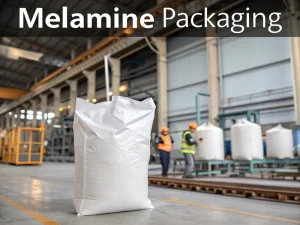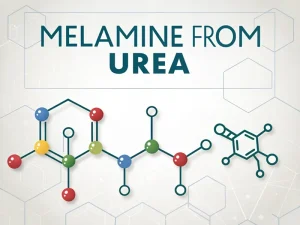
Melamine Packaging
Tech Blog Melamine packaging For manufacturers, inaccurate packaging not only fails to meet national standards but also increases labor costs and the risk of product


Melamine powder is an important industrial chemical that plays a crucial role in manufacturing due to its high nitrogen content. Its melting point is the key physical property that controls its use in various processes. Understanding the melamine melting point is crucial for optimizing manufacturing technology, ensuring product quality, and addressing safety and environmental issues.
The melting point of a substance is the temperature at which it transitions from a solid to a liquid at standard atmospheric pressure.
For melamine powder, this characteristic is crucial for its processing and application in industrial environments.
Melamine powder melting point: The theoretical melting point of melamine powder at standard atmospheric pressure is approximately 354°C (669°F). However, it is worth noting that melamine does not simply melt into a liquid at this temperature. On the contrary, it decomposes and releases harmful byproducts such as cyanide and ammonia when it approaches its melting point. This decomposition is a key factor in its industrial processing, as it limits the temperature range within which melamine can be safely processed.
Low temperature sublimation: When rapidly heated, melamine can sublime at around 300°C (directly transforming from a solid to a gas), bypassing the liquid phase. This characteristic is utilized in specific purification processes, but must be carefully controlled to avoid releasing steam in industrial environments.
Melamine powder has a high nitrogen content and aromatic ring structure when decomposed at around 354°C;
Urea has low thermal stability at 133°C and no triazine ring;
Formaldehyde -92°C (boiling at -19°C) is a gas that reacts with melamine at room temperature.
Impurities such as cyanuric acid (a byproduct of melamine synthesis) or unreacted raw materials can lower the practical melting point and alter the decomposition pathway.
Crystal form: Melamine can exist in different crystal phases (alpha and beta forms) under different synthesis conditions. The alpha phase (most commonly) is more stable at room temperature. In contrast, the beta phase may exhibit slightly different thermal transformations at high pressure or temperature.
Atmospheric pressure: Under reduced pressure, melamine may sublime or decompose at lower temperatures, making vacuum treatment a consideration in specific industrial applications.
Contact with water/air: Moisture or oxygen will accelerate degradation at high temperatures, releasing ammonia or other volatile compounds.
The high melting point and thermal stability of melamine make it indispensable in several industries:
Melamine formaldehyde resin: These thermosetting polymers require heating above the melting point of melamine to initiate cross-linking reactions. The obtained resin is used for laminates, adhesives, and flame-retardant materials
Heat resistance: Electrical insulation components and other products utilize the high temperature tolerance of melamine without degradation.
Flame retardants: The thermal decomposition of melamine at high temperatures releases nitrogen gas, which dilutes oxygen and inhibits combustion. This makes it valuable in flame retardant formulations for plastics, textiles, and building materials. However, manufacturers must balance their flame retardant properties and the risk of cyanide release at extreme temperatures, such as during a fire.
Limitations of plastic processing: Unlike thermoplastic plastics such as polyethene, melamine-based resin is a thermosetting resin that cannot be remelted without decomposition. This limits their recyclability and requires precise temperature control during the moulding process.
Safety risk: In the event of industrial accidents or improper disposal, burning products containing melamine can release toxic smoke, including hydrogen cyanide, which is a serious health hazard.
Melamine powder melting point and thermal behaviour are the core of its industrial applicability and related risks. Its high decomposition temperature of approximately 354 °C enables the production of durable resins. Still, strict control of processing conditions is also required to avoid the release of toxic byproducts. By understanding the subtle differences in the melting point of melamine, the industry can optimize its use while reducing risks, ensuring its safe use.

Tech Blog Melamine packaging For manufacturers, inaccurate packaging not only fails to meet national standards but also increases labor costs and the risk of product

Tech Blog How to Detect Melamine in Textiles? Melamine powder, a nitrogen-containing heterocyclic compound, is widely used in flame-retardant textiles and plastic products due to

Tech Blog melamine from urea Melamine is well-known for its wide range of applications, but its raw material for production is surprisingly urea. For manufacturers,

JINGJIANG MELAMINE POWDER
© JINJIANG MELAMINE